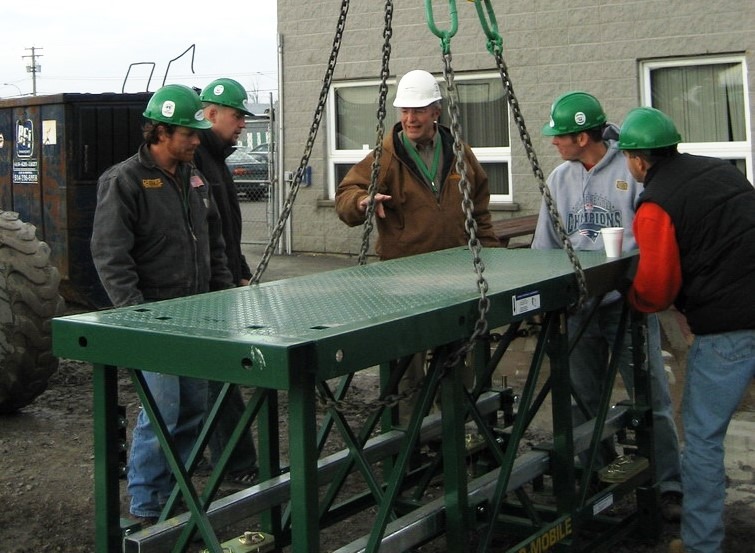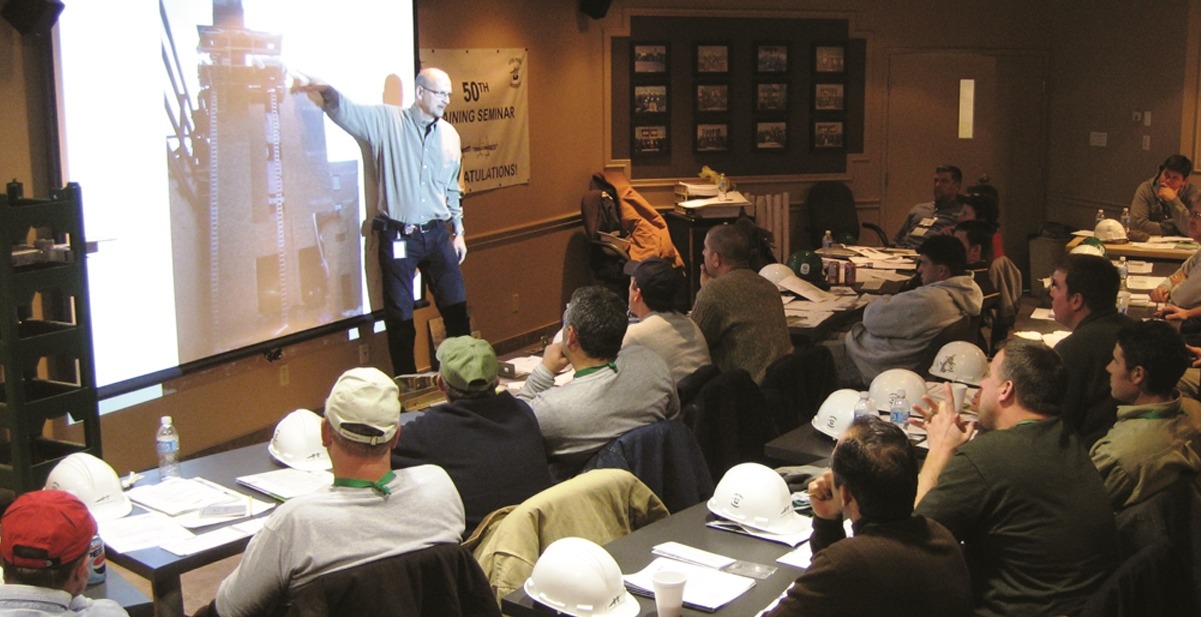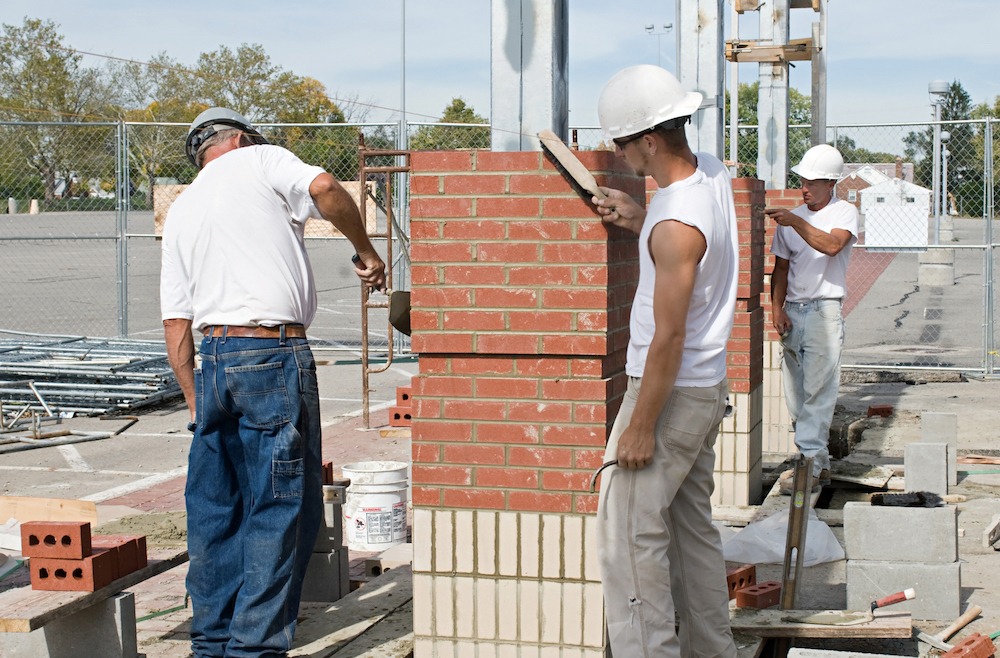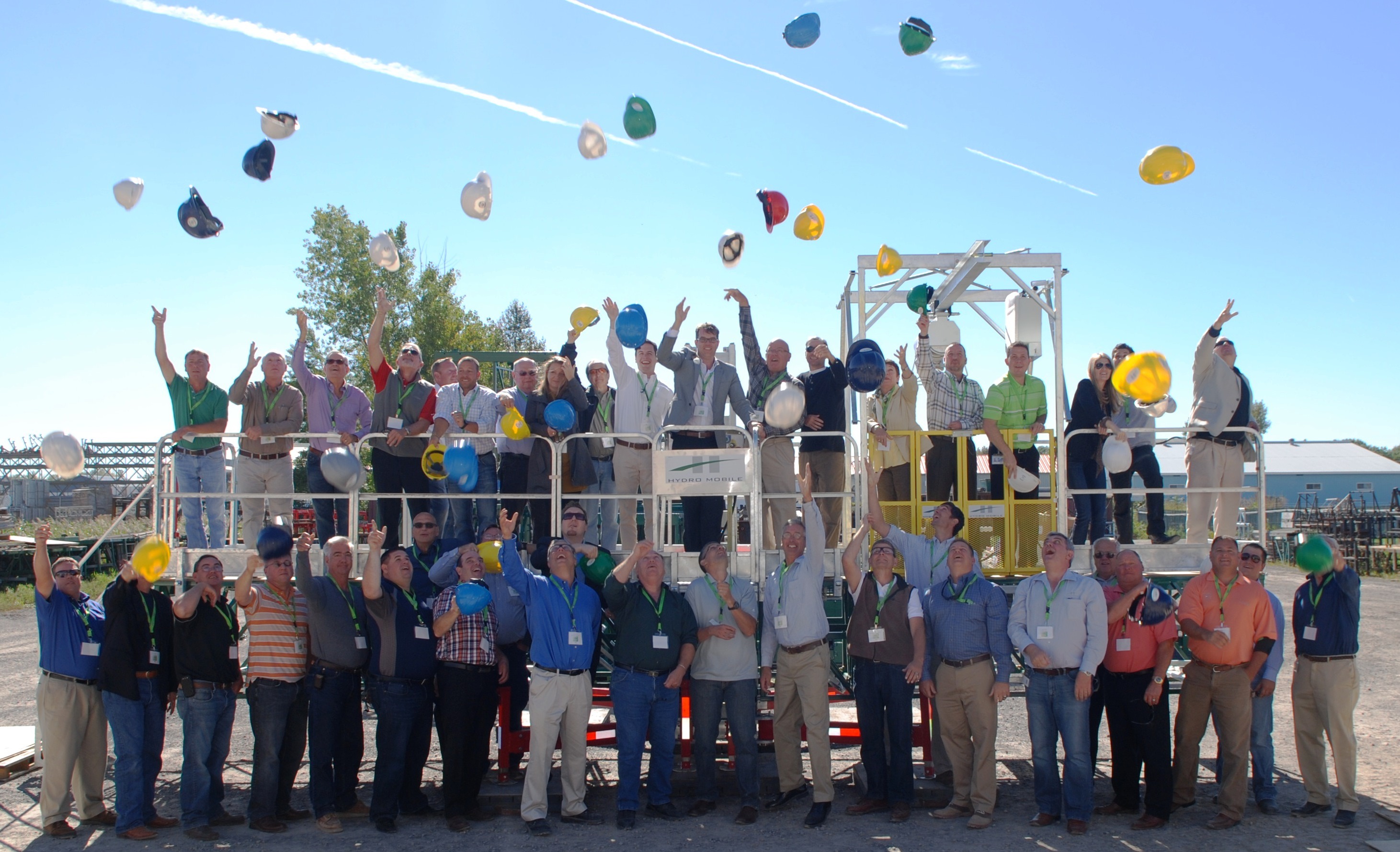Training on aerial work platforms, scaffolds, swing-stages and mast climbers is vital in the effort to reduce serious injury or death on construction sites. Working at height requires a safe working attitude, a respect for the challenges of working at height, and comprehensive training. Talk to trainers about their training experiences and they will relate to you some of the questions they regularly get asked by exasperated employers who are less than happy about having to lose productivity time because of training, and the questions they ask point to the challenge ahead:
How much training do I need? I can figure it out myself, it can’t be that difficult.
Do my people really need training on this machine? we’re only going to use it for a day.
How much is the training going to cost?, there’s not enough money in the job for this.
How long is it going to take, we got stuff to do?
The conflict between productivity/profitability and training will, sadly, continue to put employees at risk, and some employers will continue to take the gamble that ‘ignorance is bliss’. Sadly that’s far from the truth.
There are also still way too many employers who really don’t care about employee safety. Ask any trainer and they will tell you they still come across the odd employer who will ask, ‘I don’t have time for training, can I just buy the cards’?
Sadly, many employers don’t approach training seriously and so they decide to roll the dice. Then an accident happens and they find out just how important training is.
There are countless businesses who have gone under because of the impact of just one accident.
The equation is simple:
Training reduces your liability, and reducing your liability can potentially save your company.
It’s useful to remember what OSHA says on the subject:
The employer shall instruct each employee in the recognition and avoidance of unsafe conditions and the regulations applicable to his/her work environment to control or eliminate any hazards or other exposure to illness or injury.
OSHA’s 5a1 clause, (more widely known as the General Duty Clause), imposes on employers the duty, to provide a safe place of work for employees. Employers need to be aware of their responsibilities, and carry them out.
The starting point, of making sure that you act according to OSHA’s regulations, is to understand the difference between training and familiarization. The dictionary definitions of these words tell us essential information:
Training is defined as ‘the action of teaching a person a particular skill or type of behavior’.
Familiarization ‘is about recognition, seeing something and recognizing what it is’.
Training and familiarization are vital when working at height.
There is also a phrase we need to have in the forefront of our minds when working at height, ‘Familiarity breeds contempt’.
The majority of people whose lives are on the line every day in a high risk profession are trained to saturation point and beyond, because training takes over when the ‘familiarity’ sets in.
Training can build a knowledge base, movement memory, and reaction memory so that people don’t get into dangerous situations, and, if they somehow end up in a potentially dangerous situation, they have the knowledge and the skill to get out of it safely.
Training manages a persons’ reaction to an unsafe situation. A properly trained employee will have the ability to spot existing and predictable hazards, and will have the knowledge to safely eliminate the hazard. The preceding sentence comes from OSHA’s definition of a ‘Competent Person’.
If we take the dictionary definition literally, we can define training as, ‘the action of giving a person the knowledge the skill and the ability to do something well; give them expertise, so their response to a particular situation will default to safe working practices’.
This explains why training requires testing, so that you can prove your knowledge, skill and ability.
Familiarization is about being aware of where the controls and safety devices are for a specific piece of equipment.
Look at it like a drivers’ license. Everyone has to learn how to drive a car, and prove their knowledge, skill and ability to the examiner before they will be given a license to drive. This is training and testing!
Once they have their license and have driven their car around for a while they decide to buy a newer car, so they sell the Ford and they buy a Volvo. The controls are a little different, so they get out the manual and they figure out where everything is and how it works. This is familiarization.
A driver’s license is required by law because familiarization is not enough. Familiarization is something that is given to someone who is already trained.
Apply the same rationale to a boom lift, a mast climber, a scissor lift, a swing-stage etc.
All too often on job sites training is actually only familiarization. Someone arrives on the job and needs to use the boom lift or the mast climber on site. The person who is currently operating the equipment shows the new guy how it works. ‘Push this to make it go up, push this to make it go down’, etc.
At best this is only familiarization, and it’s not enough.
Employers who invest in proper training for their employees are taking a huge step towards protecting the liability of their company.
It’s vital to look at individual employees’ needs, not the job title they have, and provide the relevant type of training.
E.g. most companies have at least one yard person, someone who stacks material, loads and unloads trucks, power-washes equipment etc. What training does this person need? The job title, ‘Yard Person’ doesn’t really help in the analysis. Ask most employers what training a yard person needs and most will suggest forklift training and training on PPE use. But employers need to analyze what the employee does, not what the job title is.
Take the example of a yard person who works in an access equipment rental company. Training is required on forklift use, power-washer use, PPE, material handling, rigging, chemical handling (cleaning agents), handling batteries etc. Does this person load boom lifts or scissor lifts onto trucks? If so boom and scissor operator training is required. It’s important to look at the training needs of an individual based on everything he or she does not the job title they have.
Training is not only important for employees’ safety, it can improve productivity, and therefore increase profit. The opportunity is there for employers who bring young workers in to the company to train them how to do the job quickly AND safely.
Post-accident a strong training record points to the employer’s general attitude to health and safety, and the investigation becomes more collaborative than confrontational. It creates an appropriate paper trail, it testifies as to the employer’s commitment apropos his/her legal responsibilities, it further testifies as to an employer’s disposition toward employee health and safety and it sets a solid, positive foundation for defense.
On many occasions an accident may be as a result of the employee’s actions or disregard for safety, and an employer may not be at fault. However an employer who doesn’t have a strong training record and safety ethos will find it almost impossible to prove to an investigator that the company was not at least partly at fault.
Any investigator will attest to the fact that when they visit an employer to conduct an accident investigation, they can tell how the investigation is likely to go within minutes of entering the premises. HR professionals who conduct many interviews will tell you that they know if they want to employ someone before they even start to talk. Their dress code, demeanor, attitude, all contribute to the interviewers impression of the interviewee before they have even spoken.
Business owners should take time periodically to walk through the premises and imagine they are health and safety inspectors. They should honestly assess how the business looks, does it feel organized, safe, how do the employees work together, how do they interact with each other, are they wearing proper work clothing, do they have, and use, PPE, etc, are they working confidently, do they care about the welfare of their co-workers?
A well organized, safe working environment, run by trained and professional staff is an important first impression.
Employers should ask themselves this question. ‘If my best customer called me and said he was going to stop by for a coffee, am I confident that he will be impressed by what he sees’?
Training is regarded by many employers as an unnecessary cost, an irritant that they could do without when, in actual fact, it’s one of the most important aspects of their business.



